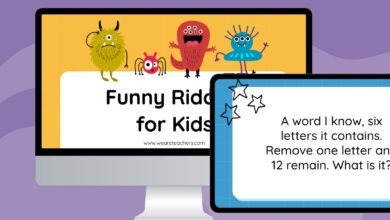24 Diverse Native American Heritage Month Activities

November is an important annual opportunity to pause and reflect on the rich cultural heritage, enduring traditions, and profound contributions of America’s indigenous peoples. As a teacher with Apache tribal heritage, I created this list of Native American Heritage Month activities to help fellow educators foster in our students greater respect, empathy, and appreciation for our nation’s indigenous roots.
Since the United States was built upon the ancestral lands of diverse tribal nations, it’s crucial that we take time to honor their legacy through Native American Heritage Month. We can show respect to the original stewards of this land we now all occupy by acknowledging the vibrant cultures, belief systems, and lived experiences of the indigenous people who have called these regions home for millennia.
Jump to:
What is Native American Heritage Month?
President George H.W. Bush signed a joint resolution in 1990 to designate November as Native American Heritage Month. During this month, all Americans are invited to deepen their understanding and appreciation of Native communities across the country. This commemoration provides a dedicated chance to educate ourselves, amplify Native voices, and find meaningful ways to support tribal sovereignty and self-determination. Whether it’s attending cultural events, reading works by Native authors, or learning about our arts and culture, this is the time to honor the first people of this country and ensure their rightful place in the national narrative.
Before You Get Started: Important Note From the Author
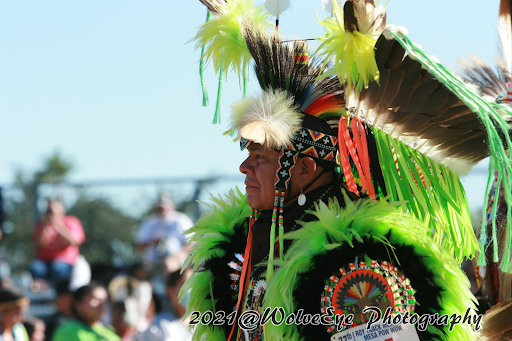
As you celebrate Native American Heritage Month with your students, here are some important tips for approaching Native traditions and activities with the respect and reverence they deserve.
Respect the depth of Native traditions
As you seek to learn more about the rich cultural heritage of our Native people through Native American Heritage Month activities, it’s important to approach this exploration with a deep sense of respect and reverence. Native culture is not merely costumes or gimmicks to be donned for a fleeting trend—they represent ancient, living traditions that are profoundly personal to our families and our way of life. These practices and beliefs have been passed down through generations, carrying the weight and wisdom of the ancestors who came before. They are not to be treated lightly or superficially, but rather with the understanding that you are being welcomed into a world of profound spiritual and communal significance.
Engage with curiosity and humility
When you have the opportunity to engage with Native customs, whether through attending a local event or reaching out to a tribal organization, approach it with an open heart and mind. Rather than assuming you know or understand, be prepared to listen and learn. Ask thoughtful questions, be receptive to teachings, and participate with genuine curiosity and humility. Remember that these traditions are not mere performances but living, breathing expressions of identity, connection, and legacy. By doing so, you honor the resilience and perseverance of our people, who have endured centuries of upheaval and yet continue to keep our lifeways alive.
Seek out authentic cultural celebrations and connections
As you navigate this journey of discovery, keep an eye out for cultural celebrations and gatherings taking place in your area. Powwows.com is a great resource for events taking place all over the Native country. These events offer invaluable opportunities to immerse yourself in the sights, sounds, and spirit of Native communities. And if possible, seek out direct connections with local tribes, who can provide you with the most authentic and meaningful insights into their histories, traditions, and contemporary experiences.
Native American Heritage Month Activities
Thank you for taking an interest in who we are and what we are all about. Have fun and be safe with these Native American Heritage Month activities!
Warrior Up! Active Native American Heritage Month Activities
A warrior has to be strong, skillful, and sharp. There are many ways to train the mind, body, and spirit. Are your students willing to put themselves to the test and join in these fun yet challenging Native American Heritage Month activities? Come on then, it’s time to warrior up!
1. Hoop Dancing
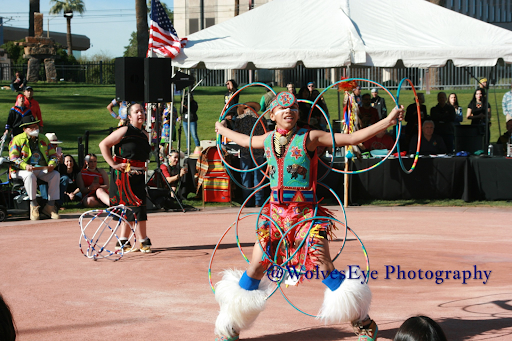
The Hoop Dance is one of many styles of dance that originated as a healing dance. The story tells us that each time the dancer passes through their hoop, a day is added onto the life of the sick individual they are dancing for. Everything from the shapes they create with their the hoops to the selection of wood is carefully considered in this sacred dance.
Today, the dance has grown in popularity and is now practiced all throughout the Native country. Hoop Dance competitions have also helped spread interest in this particular dance. The pinnacle of the Hoop Dance contests is the World Hoop Dance Competition hosted by the Heard Museum in Phoenix, Arizona. If you are in the area, this is definitely an event you’ll want to experience!
Watch this video to learn about the Hoop Dance. Then watch this video for Hoop Dance tips to get started.
As a physical activity, you can use Hula-Hoops of various sizes to create your own shapes and dances. There are plenty of great powwow songs to listen to while dancing. Search “powwow music” on any music media source and you’ll find lots to choose from.
2. The Arctic Winter Games
The Arctic is one of the harshest environments on the planet. Despite the challenges of arctic life, the Inuit people have survived there for thousands of years. One way they maintain their strength and grit is through tough physical challenges. The Arctic Winter Games and the World Eskimo-Indian Olympic Games are two of the biggest competitions held in the region.
The Kneel Jump is an example of an elite Arctic game. The challenge is designed to teach people how to quickly get to their feet if a predator is nearby. Are you and your students up for the challenge? Watch the video above to learn the story of the Kneel Jump. Plus check out this video to learn about more games in the World Eskimo-Indian Olympics.
3. Lacrosse
Lacrosse is a fast-paced game that takes place on a large field. Two teams compete to shoot a small ball into the opposing team’s goal. The ball is passed and shot via a wooden stick with a small net on the end. Although the game has evolved slightly, its essence is still deeply rooted in the Native culture in which it originated. This game was practiced for centuries by our Native people. The story of its origins holds deep spiritual meaning for the tribes that practice lacrosse. Use the videos posted here to learn more about the game.
You may want to adopt fewer physical rules to play at school. For example, you can use Ultimate Frisbee rules, where a person can’t run when they have the ball. Therefore, they must pass the ball once they catch it. Coordinate with your P.E. teacher to see what modifications can be made to ensure a fun and safe experience for your students.
First, watch the video above to learn about the origins of lacrosse. Then watch this video to learn the basic rules of lacrosse.
4. Clans for the Month
In Native culture, our tribes are grouped into clans. Each clan consists of a number of families. Depending on your tribe, you may identify with your father’s or your mother’s clan. Each clan is known for its unique characteristics and is identified by an animal or element. For example, my wife belongs to the Quechan tribe, one of the many diverse Colorado River tribes. The river was the main source of life for her people and therefore held great significance in their daily lives. She belongs to the Muskrat Clan. Muskrats are remarkably adept aquatic creatures, perfectly adapted to thrive in the rushing currents and tranquil backwaters of the mighty Colorado. Just as the muskrat is supremely comfortable navigating the river’s winding channels and submerged banks, so too are the Quechan people inextricably linked to this life-giving waterway.
Here’s your chance to group your class into clans. As a clan, each group will need to decide which element or animal represents them. Then, they can design a nameplate that is displayed during class. This month can double as not only a cultural month but a chance for team-building Native American Heritage Month activities and skills. You can award students points for exhibiting exemplary characteristics as a clan throughout the month. The clan with the most points at the end of the month wins.
Before you get started, watch the video above about clan structure and purpose.
Taste of Tradition: Native American Food
In Native culture, food is more than something we eat. Food is a way to connect to our ancestors. It is the medicine of the land. Food is our connection to our Mother Earth and our Creator. Food teaches us and reminds us of our place in the sacred hoop of life. Join us for some traditional dishes as you reflect on your own family recipes and what they mean to you.
5. Acorn Cookies
Have you ever had the pleasure of hiking through a beautiful oak grove on a cool fall afternoon? If so, you probably noticed the forest floor was littered with acorns. These special seeds were a staple of many California Native tribes like the Miwok, the Ohlone, and the Kumeyaay to name a few. Acorns are full of delicious nutrients that are important to our health. Preventing free radicals from forming in your body and reducing swelling are just some of the benefits found in acorn consumption. If prepared correctly, they also make a delicious, nutritious Native treat: cookies!
Watch the video above to learn how to make them. Plus, check out this video for a modern take on traditional food practices.
6. Corn Bread
Is food more than just something we eat? Could food also be medicine? Sometimes we refer to our traditional foods as “good medicine” because it keeps our bodies in balance, strong, and healthy. One such food is corn, which is considered a sacred food in our Native culture as it is used in many ceremonies. You can use every part of the corn. For example, corn pollen is used as a prayer powder in the Apache Sunrise Ceremony.
First, watch this video with an example of corn creation stories that are told by our different tribes about the origin of corn. Then watch the video above for a recipe that explains how to make corn bread from scratch. You can also watch this video about how to make corn bread without grinding. Finally, check out this video about tribes working together to heal through the replenishing of their traditional diet.
Together as a class, enjoy the process of making your own corn dish. From measuring, mixing, and baking, you and your students will have a wonderful experience. If you’re feeling brave, grab a molcajete and have the students grind some corn kernels by hand.
7. Wojapi
As we enter the month of November, I’m sure you are only halfway through your Halloween candy. But did you know that nature has candy too? Yes, it’s true. I’m talking about nature’s berries and fruit, of course. A large number of tribes spend time gathering the local berries and preparing them in various types of dishes. Wojapi is a Lakota-style dish prepared from the berries that grow in their traditional lands that once ranged from North and South Dakota and into some neighboring states. Remember, before the colonies were formed on the East Coast, land was not divided by states but rather divided by geographic features and hunting territories.
Are you ready to gather some berries and prepare a delicious meal? Watch the video above to learn to make wojapi with our Lakota elder.
8. Potlatch
Potlucks are very popular ways to celebrate the harvest season in November. As Native people, we also have many gatherings centered around the sharing of food. One such gathering is the potlatch. Potlatch is a Nuu-chah-nulth word that means “gift” or “to give.” Traditionally the host tribe ensures that all of the guests are provided with an assortment of gifts, food, and entertainment. Creating good memories and good feelings is a cornerstone of our Native culture.
Now it’s your turn to host a potlatch. Together, plan the food, entertainment, and gifts you will exchange with another class. You may want to use some of the food and art ideas from this article. This might be a great way to end Native American Heritage Month in a grand fashion, but feel free to hold your potlatch at a time that best suits you.
To get started, watch the video above as a brief intro to the potlatch.
Get Cozy: Quiet Cultural Native American Heritage Month Activities
During the 1800s, tribal leaders met with the United States to discuss the new laws of the land. When United States officers and officials met with tribal leaders, they would sometimes meet several times over the course of a few days. The officers and officials were often impressed by how quietly and attentively our Native leaders listened, especially when they realized that the tribal leaders could recall everything that was said over the course of the whole meeting despite never having written anything down. Native culture is composed of oral tradition instead of writing. Elders and adults pass down lessons through stories and songs to the children. Being a good listener is a way of life, not just a skill to help us in school. Here are some quieter Native American Heritage Month activities that help explore our Native culture.
9. Pony Bead Corn
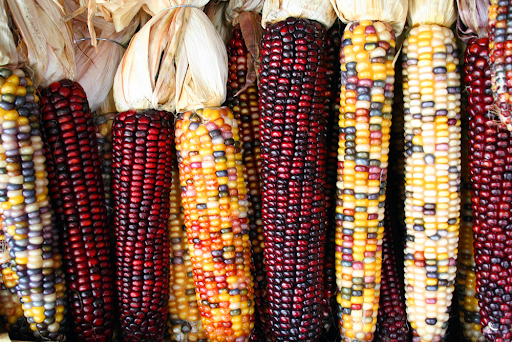
As you learned earlier in this article, food is sacred, and in the Southwest, corn is that food. Today, we can make a beautiful work of art to honor the corn plant. Pony beads are the main material for this art project. Unlike corn, pony beads were not native to this land—they were brought over in the 1800s by European settlers as a means to trade with the Native people. You’ll find pony beads and seed beads in multitudes of our traditional clothing and jewelry.
You can learn more about the introduction of glass beads on this continent by clicking on the link below. Let’s see what kinds of beautiful corn will come from your students!
Learn more about the history of pony beads in America here.
10. Family Tree
November is the month in which we celebrate Native American heritage, but it’s also the month of Thanksgiving, a cherished holiday when we spend time with loved ones and give thanks for our blessings. Family lineage is an important part of our Native culture and is often presented when speaking to an audience or when introducing ourselves. Our lineage helps identify who we are, who we are related to, and where we come from.
What a wonderful time to reflect on your own family. Using these family tree templates, students can construct a family tree as you learn more about where they come from and the unique heritage of their family lineage.
11. Creative Writing
All Native people love hearing a good story by the warm firelight. We have stories about everything on this earth. From the tiny ant to the first fire to the stars in the sky, we have stories about how they all came to be.
First explore some of these magnificent stories of the Choctaw Nation. When you’re finished exploring, it’s time for students to write their own story. Using creative writing, have them describe how things came to be in their natural environment. Let their imaginations run wild with this one. Then gather together for some original storytelling as they share their writing with peers.
12. Read a Book
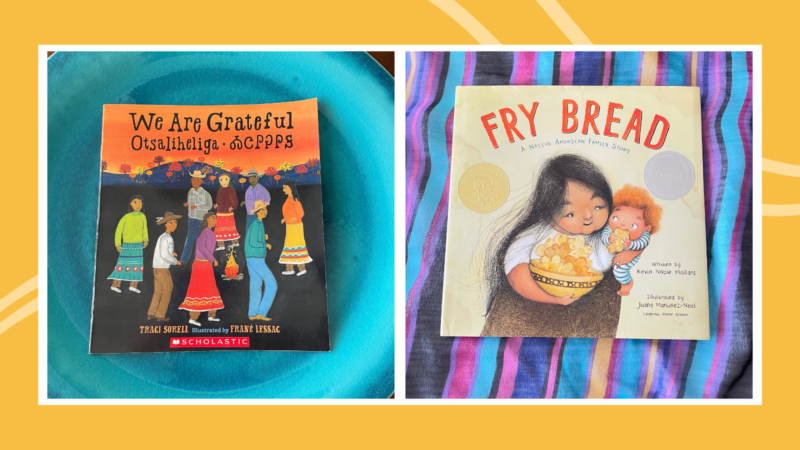
Books have the power to take us on incredible journeys and open our eyes to different perspectives. Native American stories, whether passed down through generations or shared in modern works, offer a unique window into the rich cultures, traditions, and histories of indigenous peoples.
Start by exploring this list of Native American books, each one filled with meaningful stories that reflect the diverse experiences of indigenous communities. As you read, ask students to think about the lessons, characters, and themes that resonate with them. When you’re finished reading, have students discuss the stories and share what inspired or moved them.
Get Crafty: Native American Heritage Month Crafts
Our symbols, colors, and designs all tell a story about who we are and where we come from. Do you have a story to tell? What will your art say about you? Let’s dive into some fun art-focused Native American Heritage Month activities!
13. Clay Pottery
As you explore the tribes across this country, you will find many forms of clay pottery. Clay is a natural substance found in the earth, usually near water. When clay is prepared correctly, it can be baked in an oven to harden and preserve the structural integrity of the vessel it has been formed into.
Check out these great videos to witness the magical process of bringing a piece of pottery to life. The video above is about Piipaash pottery, and the one below is about Catawba pottery of the past and today.
When you’re finished, grab some clay and have your students start making their own pottery. What designs will you add? What colors and symbols hold meaning to you? You can host a pottery art show when you are finished.
14. Turtle Island Crafts
The term “Turtle Island” is used all throughout the Native country. It’s how we describe the North American continent. Oddly enough, when you look at a map of the continent, it resembles a turtle. Here’s the weird part though: The story of Turtle Island is older than any historical map. So how did we know?
Consider that idea as you create a fun Turtle Island craft. First watch this video to hear the Ojibwe story of Turtle Island. Then watch either the Pipe Cleaner Turtle Craft video above or this video with a paper plate turtle tutorial.
15. Native American Designs
When exploring the art and culture of our Native people, you’ll see an array of beautiful designs and colors masterfully composed in various mediums. Something to consider, though, is that all of the colors, symbols, and designs have meanings and historical value. For example, often the color blue represents the water of a nation. Sometimes the color red can represent the blood of our people.
You can learn more about some of the diverse symbols and designs of our people through the video above about Navajo symbolism, as well as this video about horse painting and this video on beadwork symbols.
Then, ask students to think about their own designs, colors, and symbols. How will they represent themselves, their family, and their community?
16. Cave Painting
There are few works of art that can take us deeper into the past than cave paintings. Some cave paintings are estimated to be thousands of years old! What did the artists intend to communicate through their paintings and markings? Can you decipher the meanings? What would you want to tell people in the future about your current generation, your current world?
Check out the video above about Panel Rock in Utah. Then watch this cave art video with creative ideas. Finally, get your materials ready for students to create their own cave painting.
17. Cardboard Roll Canoe
A canoe is an essential vessel for coastal tribes that navigate the waters of their homelands. Tribal elders and leaders of the community teach the youth canoe-making as a spiritual process. Some of these traditional practices became rare, even extinct. Thankfully, some tribes are reviving the practice of birchbark canoe-making.
First watch the video above to see how this tribe makes their traditional birchbark canoes. Then learn how to make your own canoe craft out of cardboard rolls.
18. Fall Leaf Dwelling
Many Native tribes throughout history have skillfully utilized the natural resources found in their surrounding environments to construct their dwellings and shelters. For example, woodland tribes used logs and trees to construct longhouses. Alternatively, tribes inhabiting more arid, desert-like areas used clay, adobe bricks, and other pliable earth-based elements to build their homes, which helped insulate them against intense heat. No matter the specific landscape, our Native people possessed an intimate understanding of the ecosystems and could sustainably harvest the natural materials at hand to meet our essential housing needs.
Can your students gather from your local environment in a sustainable way to craft their own miniature dwelling? Start by watching this video on Native American dwellings. Then watch the video above to learn how to make a DIY Native dwelling.
19. Kachina Dolls
Kachinas are powerful spiritual beings that have existed with the Hopi people since the beginning of time. They have taught the Hopi about ceremonies and ways of life, and out of gratitude, the Hopi people honor the kachina with songs, dances, and kachina dolls. Each kachina is unique and has a name and a specific purpose. For example, Crow Mother is the guardian of the children. You and your class can learn more about kachinas from the videos below.
Your students can create their own stories and dolls to represent them, or they can try to create a version of an existing kachina. First, watch this video on the Kachina beliefs. Then watch this video on working on Kachina art. Finally, watch the video above to learn about Kachina dolls for class.
20. Talking Stick
The talking stick is a great addition to any classroom. Tribes have been using the talking stick for generations. As a democratic society, we believed in letting all of our leaders speak in our lodges. Big decisions were discussed and agreed upon by the whole tribe, and in this way, we remained close together, unified in our movements.
A talking stick should represent the people. If you’re creating one for your class, first watch the video above to learn more about talking stick usage. Then you can invite students to bring in a small trinket to tie onto the stick. Other options may include colored beads, or paint that each child chooses. This way when the speaker is holding the talking stick, they are holding the attention and good intentions of all the people who contributed to it. You may want to try the talking stick in your class discussions. Let’s see how the talking stick can impact your classroom.
21. Huichol Bead Art
Upon first setting eyes on Huichol bead art, you’ll surely be drawn in by its complex, intricate designs and vibrant colors. But if you ask the artist about the meaning, you’ll be even more intrigued as you learn that each color and design holds a specific meaning.
Learn more by watching the above video as an introduction to Huichol bead art, with information about designs and meanings. Then, head to your local art supply store or go online to purchase a variety of beads to be used in your own Huichol-inspired art. You can ask students to bring in an object that will be covered and decorated with the beads, or they can simply compose the design on paper. Don’t forget your glue!
22. Totem Poles
The iconic totem pole has long been seen in American culture, but do we truly understand its historical meaning and significance to the people? Totem poles are used to represent families and their history. Each clan or family is represented by various elements and animals. The family lineage is then told by stacking these elements and animals on the totem pole. This beautiful tradition is still practiced today.
Start by watching this video on totem poles today. Then watch the video above with totem pole ideas, so your class can start making your own totem stories.
23. Garden Planting
If you’ve ever driven by an agricultural field, you undoubtedly noticed rows and rows of the same crop. For example, you might see hundreds of heads of lettuce when passing through the field in Yuma, Arizona, or hundreds of rows of strawberries when cruising through beautiful Watsonville, California. Differing from this practice, native agriculture uses various seeds in the same growing space. This is called companion planting because the plants help each other as they grow together.
The Three Sisters is a famous example of this model of growing. How wonderful would it be to start a small garden at your school? The Three Sisters Garden is an easy, fun way to start. Just be sure you are planning for the correct growing season. Usually, the Three Sisters—squash, corn, and beans—have to be planted in the spring. However, this can be a great time to draw a blueprint of your garden and start campaigning for donations, while also preparing the ground and building your gardening team.
Watch this video about the Three Sisters Garden to get started.
24. Decorate With Inspirational Quotes and Photos
You don’t have to go to a museum to see photos of Native Americans or to read their inspiring words. You can turn your school hallways into a museum experience by printing our photos and quotes of famous Native Americans and hanging them in the halls. Students will be inspired as the hallways come to life and speak into their lives with words of encouragement and wisdom.
If you’re interested in learning more and showing your support for Native Americans, check out Native American Rights Fund, Native Governance Center, and Association on American Indian Affairs.
For more activities to honor Native Americans, check out How To Celebrate and Honor Indigenous Peoples’ Day.
Source link



